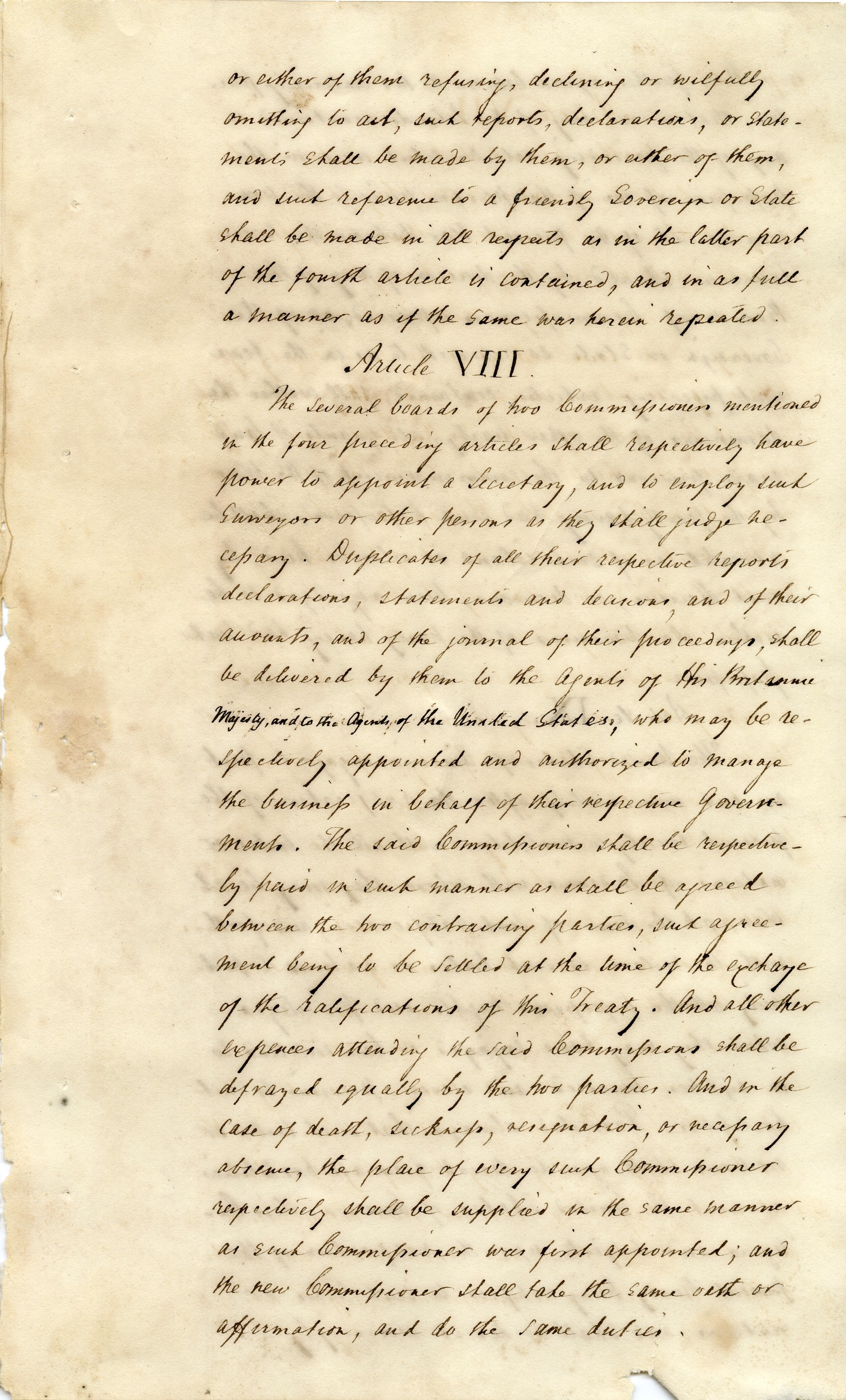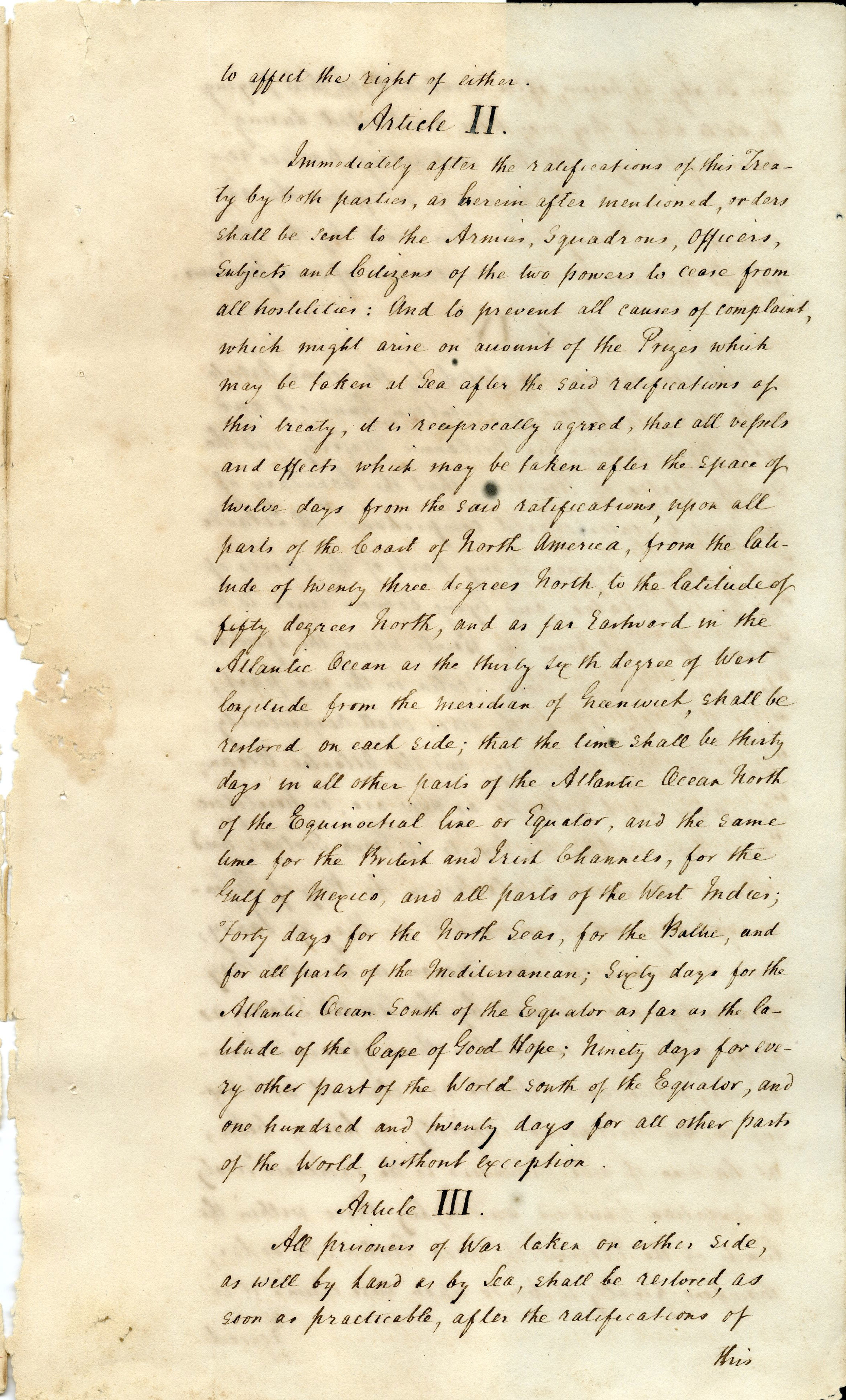The War of 1812: A Bicentennial Exhibition, Case 16
Case 16: Peace
Peace was a long time in coming. Britain’s revocation of the Orders in Council in June 1812 did not lead to an end to the fighting as many hoped. In the fall of 1812 the Russian Czar offered his country as a mediator, but this effort collapsed in 1813 because the British did not want third-party involvement. In January 1814 the Americans accepted a British offer of direct negotiation. The talks were to take place in Ghent, Belgium.
Both sides had strong motivation for peace. With the downfall of Napoleon in 1814, Britain was anxious to end years of conflict in Europe and an annoying little war in America. The United States was virtually bankrupt from the expense of a war that was unpopular in many areas. Negotiations began in August, with maritime rights and the establishment of an Indian buffer state in the Old Northwest being major sticking points. Events of the war (Niagara, Plattsburg, Washington, and Baltimore) continuously shifted the negotiating advantage throughout the fall of 1814. A treaty was finally signed on Christmas Eve. It was based on the principal of status quo ante bellum, the state of affairs before the war. Maritime rights were not addressed, and the British abandoned political support of the Native Americans.
Britain’s Prince Regent ratified the treaty on December 28 and President Madison and Congress on February 16. The return of occupied territory began in the spring of 1815 and was completed by the end of July.
“Treaty of peace and amity between His Britannic Majesty and the United States of America,” DS, Ghent, Belgium, December 24, 1814. Manuscripts Division, Henry Goulburn Papers.
Henry Clay wrote out this draft of the Treaty of Ghent as an “official” copy that was signed and sealed by the peace commissioners. British member Henry Goulburn (1784-1856) kept it as a souvenir after more formal copies had been executed.
P. van Huffel, [Portrait sketches of American peace commissioners, 1814]. Pencil on paper. Manuscripts Division, Christopher Hughes Papers.
Christopher Hughes (1786-1849) served as secretary to the American commissioners. He had a Dutch artist sketch four of the five members of the U.S. delegation and himself. Not displayed are the portraits of Hughes and Albert Gallatin (1761-1849). Jonathan Russell (1771-1832) did not sit for a portrait.
Alexander Macomb ALS to Thomas Brisbane, Plattsburg, March 20, 1815. Manuscripts Division, Thomas Brisbane Papers.
News of the end of hostilities allowed former enemies to renew social and professional contacts. In this letter U.S. General Macomb (1782-1841) responds to General Brisbane’s “design of calling at my quarters.” Macomb welcomed this opportunity to become personally acquainted with “an officer, who is so universally esteemed.”
Daniel Clarke Sanders, An Address Delivered in Sherburne, 28th February 1815, Occasioned by the Celebration of the Peace of Ghent, 24th December 1814 (Dedham, Mass., 1815). Book Division, Pam 1815 Sa.
Sermons and addresses lauded the end of the war. Daniel Sanders began his remarks by stating, “An event as rare and infrequent as it is impressive and joyful has assembled you together in the house of God. Once more, peace has spread her olive branch over the whole Christian world.”

























